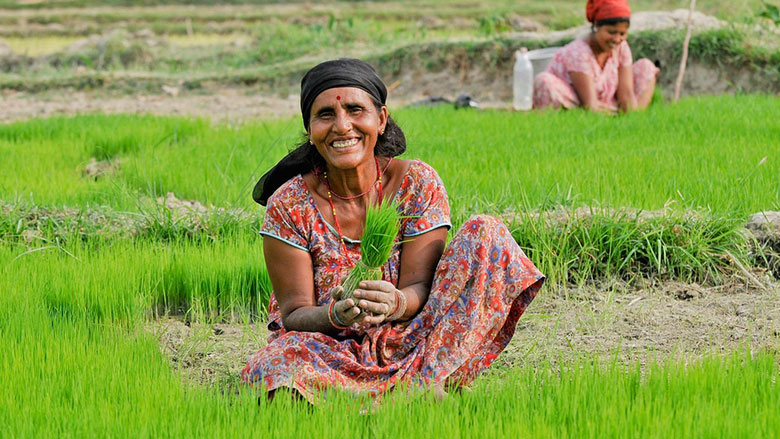In September 2015, world leaders of the 193 United Nations members formally adopted the new Sustainable Development Goals (SDGs), perhaps the strongest international agenda to bring an end to global poverty. The SDGs aim to address the interlinked problems of inequality, hunger and climate change by 2030.
Achieving many of the SDGs rests upon the ability to provide a climate-smart food system that will feed a growing population with nutritious food, provide livelihoods and also help steward our natural resources.
A new World Bank report, Future of Food: Shaping a Climate-Smart Global Food System, examines ways to improve the productivity and resilience of the food system and to make agriculture part of the solution to climate change.
The report recommends implementing agriculture and food production practices that secure a triple win: boosting productivity, enhancing resilience and lowering greenhouse gas emissions (GHG) – the three pillars that form the basis of climate-smart agriculture (CSA).
Recommendations include:
- Ensuring access to existing and new climate-smart technologies for poor farmers. These technologies can help reduce yield gaps and improve resilience.
- Closing the gender gap. Providing women farmers with proper resources and support will help raise yields and improve food security.
- Reducing GHG emissions through improved fertilizer use, alternate wet and dry irrigation of rice and improved livestock breeding and waste management.
Shaping a Climate-Smart Food System builds upon a previous report, Ending Poverty and Hunger by 2030: An Agenda for the Global Food System, which was published in April 2015. That paper provides an overview of key actions for ending widespread hunger. Outlined in the report are three focus areas that can have the greatest impact: climate-smart agriculture, better nutrition and stronger market access for farmers.
Improving global agricultural performance is central to addressing poverty and food insecurity, as three-quarters of poor people still live in rural areas, and nearly two-thirds of the world’s poor people work in agriculture. The World Bank continues to be committed to helping build a climate-smart food system that can feed everyone, every day, everywhere.
